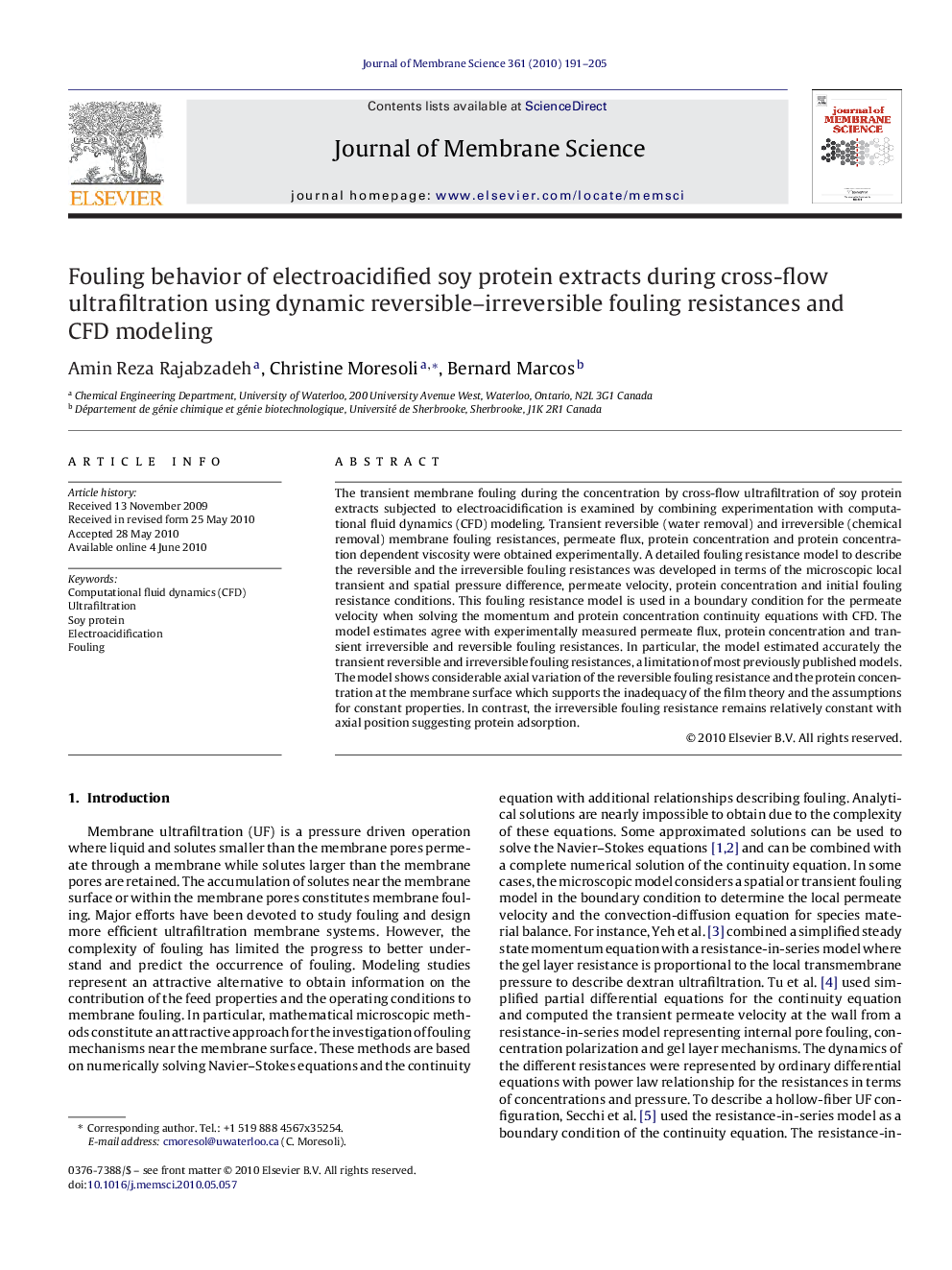| Article ID | Journal | Published Year | Pages | File Type |
|---|---|---|---|---|
| 636071 | Journal of Membrane Science | 2010 | 15 Pages |
The transient membrane fouling during the concentration by cross-flow ultrafiltration of soy protein extracts subjected to electroacidification is examined by combining experimentation with computational fluid dynamics (CFD) modeling. Transient reversible (water removal) and irreversible (chemical removal) membrane fouling resistances, permeate flux, protein concentration and protein concentration dependent viscosity were obtained experimentally. A detailed fouling resistance model to describe the reversible and the irreversible fouling resistances was developed in terms of the microscopic local transient and spatial pressure difference, permeate velocity, protein concentration and initial fouling resistance conditions. This fouling resistance model is used in a boundary condition for the permeate velocity when solving the momentum and protein concentration continuity equations with CFD. The model estimates agree with experimentally measured permeate flux, protein concentration and transient irreversible and reversible fouling resistances. In particular, the model estimated accurately the transient reversible and irreversible fouling resistances, a limitation of most previously published models. The model shows considerable axial variation of the reversible fouling resistance and the protein concentration at the membrane surface which supports the inadequacy of the film theory and the assumptions for constant properties. In contrast, the irreversible fouling resistance remains relatively constant with axial position suggesting protein adsorption.
